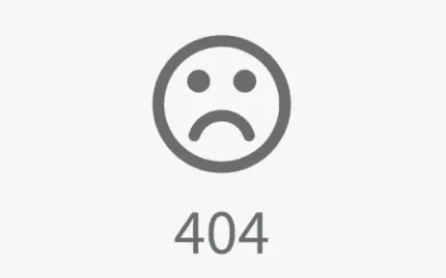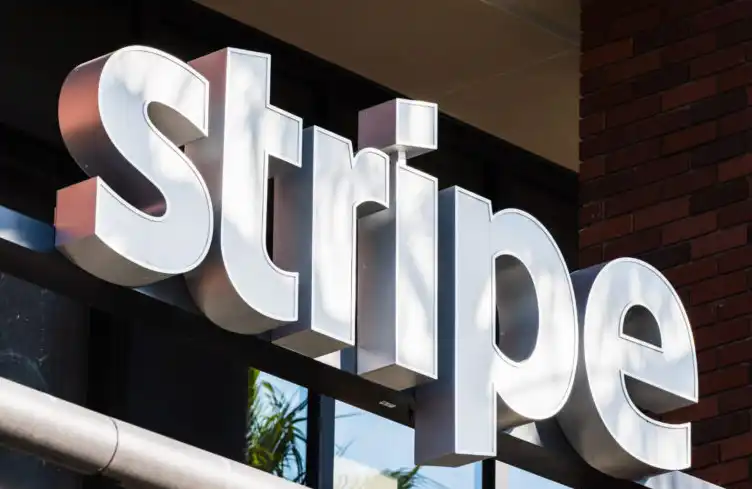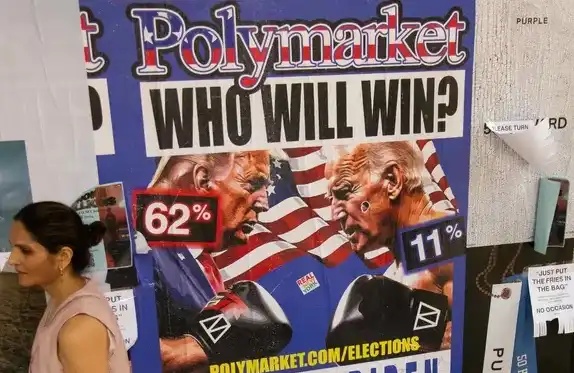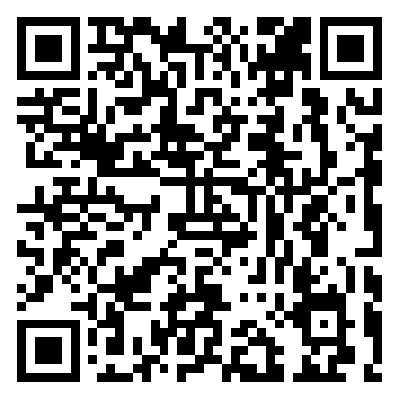How can start-ups stand out in the cold creator economy?
How Startups Can Survive the Creator Economy Winter
EVAN ARMSTRONG
Evelyn, W3.Hitchhiker
TL; Because 99 percent of creator revenue accrues to the top 0.01 percent of creators, creator economy startups have to find a way to justify a portion of that revenue. But it won't be easy, and in this coming bear market, only a few may succeed.
From 2020 to 2022, it's relatively easy to raise seed rounds for your startup. All you have to do is cryptically tweet the "password" -- "I've built something new in the creator economy" -- and $5 million magically appears in your bank account. Even series A rounds are generally easy because cross-funds are throwing money around.
But that was then, and this is now. Interest rates are up! For its multimillion-dollar value, digital Monkey can now sell for only 100,000! The founders shuddered, cried, and vomited as they looked at their 20-fold earnings. Venture capitalists are learning about "cash flow". It's really bad out there! I'm not joking, I'm telling you in all seriousness: private market capital will be in short supply for some time.
My friends, the winter of the creator economy is coming. The result will be a collective weakening of the creator economy. In the short term, many of the hotter start-ups will fail. In the long run, tough teams need to work with top digital start-ups to survive. The difference is whether these start-ups can answer the question: What are you doing to earn your income?
In researching this article, I spoke to dozens of management teams, more than a hundred creators, and some of the most prominent investors in the creator space. Thank you to all those who have contributed generously.
Now, back to business: to understand why revenue share is so important, it's important to take a closer look at creators as customers.
Small customers, small wallets
The good news for the creator economy is that there is a strong and positive impetus for growth -- more and more people are pursuing creative lives online. A Linktree report puts the total number of creators at about 200 million. Another Kajabi report puts it at more than 50 million. (Much of the difference depends on how you distinguish social media users from "creators.") But anyway, it's a huge number. On an emotional level, there is a deep sense of satisfaction in helping individuals build their own businesses and pursue their passions.
But as the sector has grown into 2020, past the initial boom, the downside of the market has become more apparent. Start-ups serving creators face multiple challenges around customer concentration, the importance of demand aggregation, and the low income of the creators' middle class.
**99% of creators don't generate meaningful revenue: ** Even among the best investors in the world, only 3 out of 20 companies have really outperformed when it comes to building venture portfolios. As a result, it is also considered a risky asset class. By comparison, more than 90 percent of the revenue accrues to the top 0.01 percent of creators. In other words, investing in early-stage entrepreneurs is 10 times riskier than investing in the typical early-stage startup. Note: Yes, there are more nuances to funding creators, but you can get a general idea. The industry is also very risky.
We can take Twitch as an example and see what this might look like in practice. Twitch creators' earnings were leaked onto the Internet in a hack in October 2021. But the results were shocking:
- 50% of revenue is generated by the top 1% of streamers.
-75% of earning accounts earned less than $120 this year.
- 896,261 accounts made no money at all
- Only 0.06% earned more than the us median household income of $67,521.
- A quarter of the total revenue comes from the first 1,000 accounts.
Twitch's results are not unique. I see a similar dynamic happening in writing (Subtack), adult entertainment (Onlyfans), video (Youtube), etc. In my entire career, I've never seen power law effects as extreme as they are in content creation. If a company wants to be at the top of the market, it's like looking for a needle in a haystack.
** You can't provide what creators want most (demand aggregation) : ** In my own experience as a creator, and in my discussions with over 100 creators over the past year, I've found that every creator has the same desire: more fans. Finding new fans is one of the most challenging and draining aspects of the job. When a creator starts their new business, they usually don't assume that their days will be filled with marketing. They just want to make things! Instead of persuading people to like their stuff.
Unfortunately, in reality, a big part of a creator's job is finding and converting new fans. Any platform that can connect new fans to creators has an immediate advantage over any other tool. Conversely, if requirements aggregation is what matters most to the creator, then all other tools are secondary. Startups can't just provide software to help creators and then unilaterally assume they'll be successful.
Only the social giants have made significant efforts to aggregate consumer demand. Youtube's recommendation algorithm, Twitter's trending topics and Facebook's recommendation page are among Hollywood's most powerful agents. They determine who wins or dies in the competitive content market. Native discovery is still happening and fans can be motivated to share content, but the most effective way to grow a creator's business is to use a platform like Twitter to develop a large, free audience and then convert that audience into the product of choice. For creators economy start-ups to offer similar features, they would have to build an entire social media platform themselves. If you have a way to disrupt Facebook, you should probably build the platform and become a billionaire.
In Peter Thiel's classic book on startups, Zero to One;
"As a good rule of thumb, the patented technology must be at least 10 times better in some significant way than the nearest alternative to give rise to a true monopoly advantage. "Improvements of anything less than an order of magnitude could be seen as marginal improvements and difficult to sell, especially in an already crowded market." Emphasis on
In order for creator economy startups to break the stranglehold of existing platforms on audience acquisition, they have to build something better, but it's really, really hard to do!
To make the role of creator economy start-ups more challenging, many social platforms are starting to build a more powerful creator tool. Platforms like Facebook are taking the industry seriously, offering enhanced profiles and new monetization options. Twitter has acquired a direct Substack competitor. The software these companies offer may not be as good as the specialized software startups can offer, but creators will forgive them if the platforms introduce them to new fans.
** Low yield and high price Sensitivity: ** In a perfect world, customers would have unlimited budgets and be desensitized to price. Creators are the complete opposite. Especially for the 99 percent of the long tail, every dollar counts. According to the Linktree survey I mentioned earlier, only 12% of full-time creators make more than $50,000 a year, and 46% of the same group makes less than $1,000. More brutally, 66 per cent see it as a side job. For technology providers, the average user doesn't have that much money to spend. So you're stuck with prices close to Spotify, and then Salesforce's.
When you mix all these things together, you get two different customer characteristics in the creator economy:
** Power Creators (1%) : ** People who make more than $70,000 a year from their content. It can be solo or as a team. They may be multi-platform, with different distribution channels and different monetization products. By themselves or with a small team, they can scale all the way to making millions of dollars.
** Long Tail amateurs (99%) : ** The other 99% of creators in the world who make very little money and don't have much cash to spend.
So we have these two different types of creator for creator economy startups to choose from, but their average contract value is very different. But no matter who you choose, you can't build a traditional SaaS business because of the low annual contract value (ACV). And in most charts, the ACV of the Creator Economy Tool doesn't even register on the list.


Because creators' income is low and they are extremely price sensitive, the creator economy tool can only charge consumers a subscription fee. This is not a very good phenomenon.
In form of currency
No matter what kind of creators start-ups cater to, the interesting thing is that creators make money in the same way: advertising and access control.
Contrary to popular belief, advertising is a beautiful thing! They make content available for free, increasing distribution by creators. They are huge -- whether you have 100 subscribers or a million, there is always an advertising product for you. Advertising is a benign flywheel that maximizes the spread of your content, attracts new fans, and generates healthy revenue.
That being said, there are plenty of downsides. Advertising can introduce perverse incentives to expand the top of the funnel at all costs, even if they have negative externalities. (Just check out your Fox News.) Although to be fair, those same incentives also exist in the subscription model. The advertising model is also painfully cyclical. When the economy was booming, advertising was a great business. What about when we're in a bear market? Like now? Not so.
Good creators make lots of free content to increase their audience, while layering higher-revenue products. Often, these products are what I call "access control". By paying for part of their content, community, or course, they can upsell existing fans, dramatically increasing their average revenue per user. Subscriptions also allow creators to profit from a smaller audience if their product is valuable enough.
Still, the numbers are small. A well-run AD agency typically sees revenue of about $10-20 per user per year. In terms of subscriptions, the best content stores have conversion rates of around 5-10%.
All of these numbers vary depending on your audience, but they're useful as an example: it's hard. The media industry has been an absolutely unforgiving place to build a business in. As a creator, can not change the power of the industry, can only change the competitive positioning. Startups serving these creators must be highly aware that their customers are not as numerous as they would like, and that they will not be able to pay enough subscription fees to build a traditional SaaS startup.
Earn the right to a share of the proceeds
On an average day in the stock market, typical high-growth SaaS stocks are trading at 20 times sales. If your goal is to build a $5 billion creator economy business, you'll need about $250 million in ARR to get there. Again, this is not an easy task when you are selling to the customer we described above.
I will not attempt to sketch out all the potential software applications a creator exploits, as the context is highly media/scale/etc dependent. But in a broad sense, the creator is an SMB media enterprise. Whatever a small media store needs, creators will need, too. In this respect, the Creator Economy tool is no different from any other SMB SaaS product at any different level. They will be affected by the same market dynamics: high attrition rates, low average contract values, and small TAM.
A decade ago, that would have made it difficult to succeed on the venture capital scale. But now the rules of the game are different. SMB SaaS has proven to be effective, especially for businesses like Toast, as they can leverage payments to capture a percentage of revenue. Capturing a percentage of revenue makes the industry not only viable, but also profitable for creator economy start-ups. It frees start-ups from the constraints of subscription. It allows the company to serve the long tail of amateur creators and scale up with those with the muscle.
At the moment, the company most adept at using revenue sharing is Youtube. They keep 45% of AD revenue for themselves and give the other 55% to creators. While many creators think that's too high, it's actually the best in the industry because the company plays the dual role of aggregator -- aggregating demand and advertising supply. In other words. Youtube provides real, indispensable value to creators. Youtube's power is so great that creators on Instagram and other platforms like TikTok often try to port their audiences from those other platforms to Youtube.
In smaller startups, the trend is to mix a variety of different software modules, add some very modest aggregation of requirements, and then take a percentage of revenue. However, in order to survive the coming winter of funding and expand their runway, creator economy startups need to find a way to increase their conversion rates. This can be done in various ways:
** Host Spicer Content: **OnlyFans currently has the best 20% conversion rate in its class. Because they are willing to take on the higher administrative burden of browsing banking regulations and content reviews, most of their income comes from adult entertainment. Similarly, Substack is currently making about $2.5 million in revenue from anti-Vax communications on its platform, with a conversion rate of 10%. By being willing to accept riskier content, platforms unleash a monopoly power that allows them to increase revenue sharing.
** No one starts their career as a creator saying, "Man, I just can't wait to hire an accountant." Even if you've done absolutely nothing to help creators find clients, the more administrative work you handle, the more likely you'll be to successfully claim a revenue share. As a company that helps people get started, you gain a level of trust. I often get comments like this when I ask the authors of Substack why they don't use a cheaper service. They take care of all the little things for me, and I've been with them since the beginning.
"** Build a Micro-saas Attention Wedge: ** Startups can find a place to gather creator fans, whether through a community platform or a Link-in-Bio tool, for a nominal fee. (Link-In-Bio charges anything from $75 for an ARR to $5,000 for a community platform.) In any case, once they gather enough attention in these fan hubs, the software acts as a meta-layer of monetization in which other products can be sold. Whether it's merchandise, courses or content subscriptions, creator start-ups can get a piece of the action.
** Become a Creative Partner: ** One of the most interesting ways to get a revenue share is to Become a Creative Partner. By helping creators create and sell their work, companies can earn a significant portion of their income. One of the most famous pioneers of this approach was the Creative Artists Agency, which packaged films such as Jurassic Park in 1989. Agents help screenwriters come up with ideas, pair them with directors and producers, and package those films for sale to major studios. A more modern iteration is Maven, a group-based curriculum platform that helps potential mentors develop their courses while requiring a percentage of income.
** Become a Financial Partner: ** creators' banking and financing needs are very unique. They receive a flood of 1099s, need cash advances for special projects and struggle to get mortgages. Because their finances are so unpredictable, traditional institutions and software tools are ill-suited to handle their needs. But the problem is so critical that if you can solve it for them, the creator will be more willing to share the revenue with you. Companies like Karat, Stir, and Spotter have varying views on the issue.
** Form an Ad Network: ** If the major social platforms monopolize consumer demand, companies may find opportunities on the other side by building Ad inventory for creators to use. Conversion rates for AD sales range from 5-30%, depending on the medium and amount of revenue. Start-ups like Pearpop are helping to meet that need.
As a last-ditch effort to scale up, if a start-up can't get a decent revenue share from creators, they can shift their creator-specific software to a higher-level platform for businesses in general. Creator- LED Growth (a patent-pending term) allows companies to tap into a wider range of use cases using software they originally offered creators. Start-ups like Circle started as software products for creators, but have since expanded into more traditional businesses.
conclusion
I admit, this article starts out a little pessimistic, but hopefully this list of options will save it! I'm a big believer in the creator economy. The wave of people using the Internet to fund their passions is not going away. There is a huge opportunity ahead for particular companies that have learned how to be partners rather than just rent-extractors.
To survive in the winter of the creator economy, startups must expand their revenue along with their customers so that they can properly serve capable creators. Otherwise, you become a micro-SMB SaaS, which is really not a good business model. But for those who do it well, revenue sharing can be used to build an incredible company while helping thousands of people build their digital media empires.
The original link
Welcome to join the official BlockBeats community:
Telegram Subscription Group: https://t.me/theblockbeats
Telegram Discussion Group: https://t.me/BlockBeats_App
Official Twitter Account: https://twitter.com/BlockBeatsAsia


 Forum
Forum Finance
Finance
 Specials
Specials
 On-chain Eco
On-chain Eco
 Entry
Entry
 Podcasts
Podcasts
 Activities
Activities
 OPRR
OPRR








